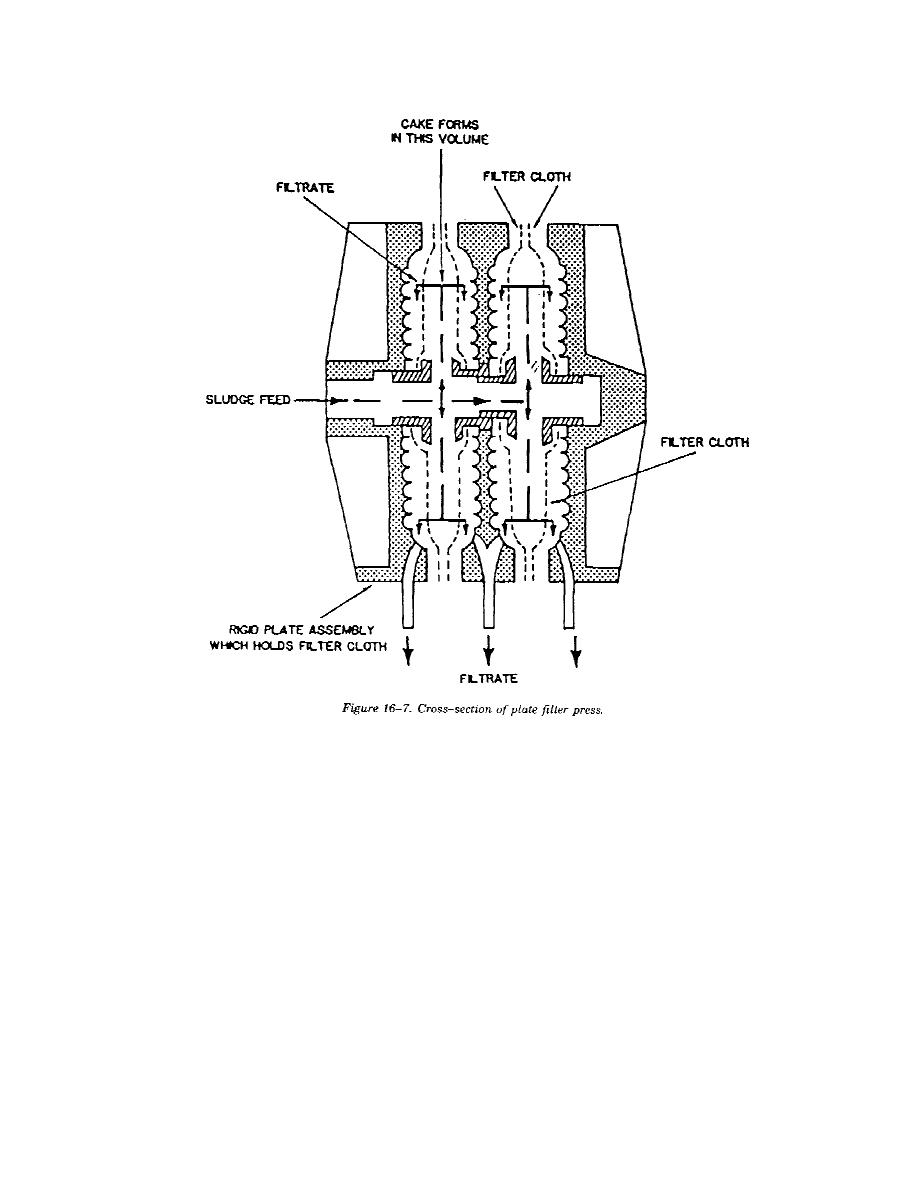
TM 5-814-3/AFM 88-11, Volume III
(1) Control. Control of filter presses may be manual, semi-automatic, or full automatic. Labor require-
ments for operation will vary dramatically depending on the degree of instrumentation utilized for control.
In spite of automation, operator attention is often needed during the dump cycle to insure complete
separation of the solids from the media of the filter press. Process yields can typically be increased 10 to 30
percent by carefully controlling the optimum cycle time with a microprocessor. This is important since the
capital costs for filter presses are very high.
(2) Advantages and disadvantages. Table 16-11 presents the principal advantages and disadvantages
of filter presses compared to other dewatering processes. Common design shortcomings associated with filter
press installations are listed in table 16-12 along with solutions for these shortcomings. The fixed volume,
recessed plate filter press will typically dewater a 50:50 blend of digested primary and waste activated sludge
to between 35-42 percent solids, while a diaphragm press will produce a 38-47 percent solids cake on the
same sludge. These cake solids concentrations include large amounts of inorganic conditioning chemicals.
16-19



 Previous Page
Previous Page
